Meet Red, the vehicle of choice for the Moroccan Rally 2012.
A 1963 Ex-Military Land Rover Series 2A SWB, registered for civilian use in 1972 and turning 49 years old for the Moroccan Rally 2012. Red is no stranger to the Sahara, this is Red's 3rd time to the Sahara.
The last time Red was in the Sahara, Red suffered a number of failures, one near fatal for the car took place. A snapped chassis, head gasket failure (resulting in Red running on only 3 cylinders for the majority of the previous road trip), clutch failure, gearbox failure (2nd gear disappeared) and over heating are some of the issues. However, Red is a sturdy beast and has recently been fitted with an electronic ignition, rebuilt gearbox, new shock absorbers and an improved braking system.
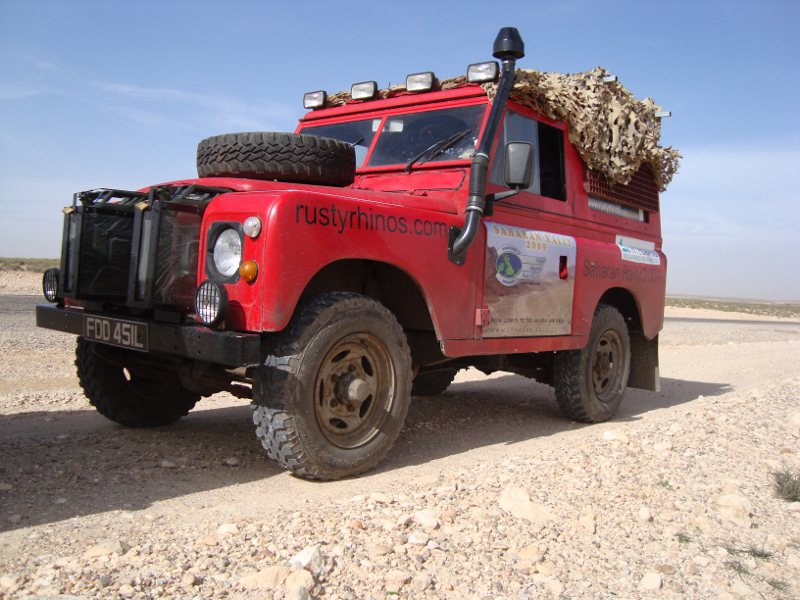
Engine: 2.25 Litre Petrol
Power: 70 BHP
Top speed: 65MPH with some tailwind
Nickname: Red
Creature comforts: Comfy seats and a loud stereo system
Modern cars are great, usually pretty reliable, quite economical (usually) and have evolved significantly over the years. That is all good and well, except that is way too sophisticated and reliable for us to have any real sense of adventure, so yet again we have opted for something a bit older.
The Red Shed
By Lewis Collard - 7th April 2012
A lot of people have heard of the Rusty Rhinos' adventures across
the Sahara. Behind the scenes
was a Herculean amount of work that has gone into preparing Red,
the nearly-50-year-old Land Rover, for the task. I'm here to tell
you all about it!
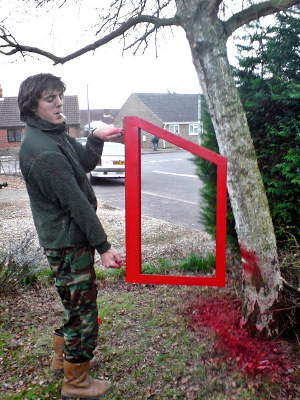
I'm Lewis Collard, and I'm part of the Rusty Rhinos ground crew.
My speciality is removing propshafts, mostly because nobody else
wants to do it. I also function as a human painting jig, as seen
above.
You all know of Red as this tough, desert-conquering beast:
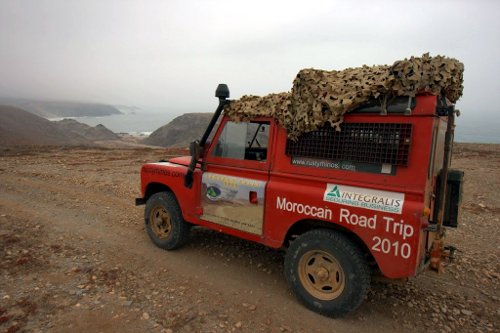
But what we started with was something like this:

Here's the Land Rover, affectionately
nicknamed "Red" (or "The
Red Shed"), as Alex bought it: £500 from eBay, from
an auction titled simply "Land Rover". It is an ex-military
Series IIA 2.25 petrol, built in 1963 and decommissioned from the military
in 1972. It had an MOT, which is supposed to be some kind of indicator of
road-worthiness. You might not know that MOT testers are
not allowed to poke around too much, or to knock anything so
hard that holes will appear. One can see the logic in that, but if a
vehicle is to go across the Sahara, it also makes sense to prod around
a little more vigorously. We prodded around a lot more vigorously,
with hammers and screwdrivers and other implements of destruction,
and found some pretty horrible things:
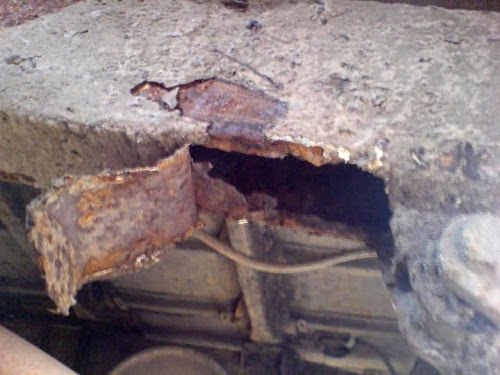
What you see here is an actual Coke can, flattened out and
glued to the chassis with silicon sealant in an absolutely
strength-critical part of the chassis (just in front of one of the rear
spring hangers). That was an especially egregious example, but we did
find plenty of rust, and where there wasn't rust there were
awful half-hearted repairs.
In the end, we ended up stripping Red right down until it was literally
an engine, bulkhead and gearbox sitting on half a chassis.
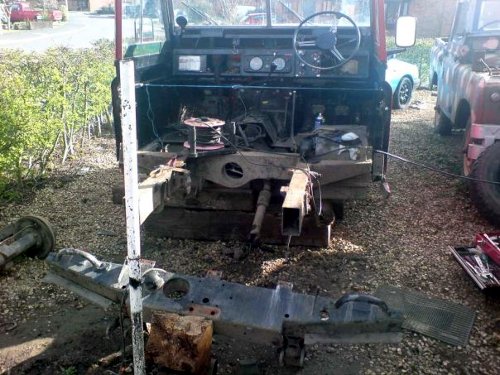
Or, "bet the neighbours love us!"
The chunk of chassis that has been hacked off in the photograph above
included the totally rotten rear crossmember:
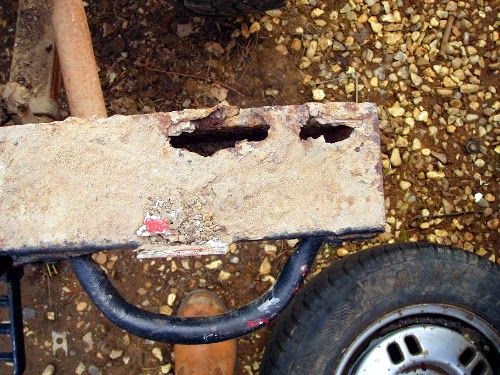
I wouldn't
possibly detail all the welding work that had to be done; if you want
that, pick up a Land Rover parts catalogue and put ticks next
to all of
the steel components. In short though, our job for months of
weekends was mostly welding, fabrication, welding, and preparation for
welding when we weren't busy welding welding welding.
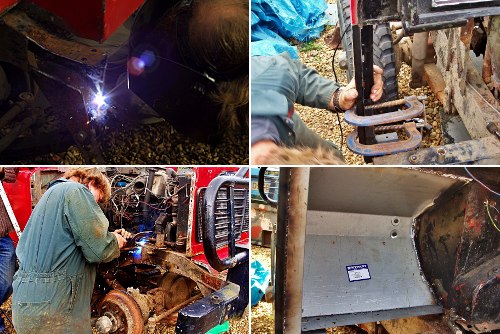
I say "our job", but all the work of doing the actual welding was
carried out by the other member of the Rusty Rhinos Ground Crew, Maurice.
Say hi to Maurice, the Actual Man Behind the Mask:
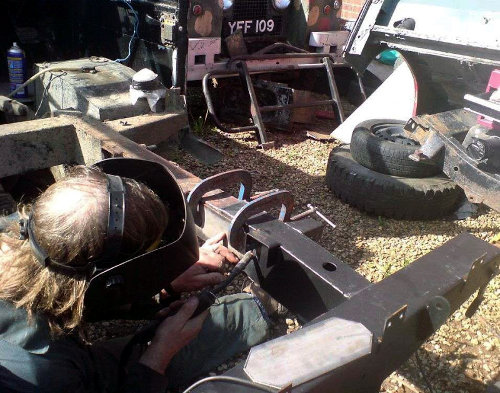
Here he is welding the new rear quarter-chassis in place (the section
cut off in the earlier picture). On top of his considerable welding
skills, his vast knowledge of Land Rovers has been indispensable
in our bringing this once-rotten, half-knackered Land Rover back to life
and we certainly could not have done this without him. Thanks, Maurice!
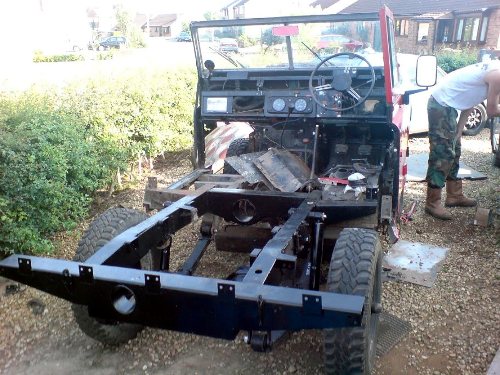
Most people would not consider a nearly-half-century-old Land Rover
a suitable vehicle in which to travel across the desert, because it is
extremely primitive. We found it a perfect vehicle to prepare for the
desert precisely because it is so primitive. Electronic
systems, power steering, air conditioning, and other modern conveniences
can't go wrong if they did not exist in the first place. One issue that
we came across
is that the electrics in the vehicle were there, but huge chunks of it
needed replacing; it was a mix of stuff that worked, stuff that didn't,
and decades of "that'll do" quick fixes. Rather than mess around
with trying to isolate the sections of the wiring that didn't work, we
solved this problem by ripping out the electrics and re-wiring the
entire Land Rover from scratch.

This all ties in with a Herculean amount of work, but of
course this
would have been a much more enormous job if the Land Rover wasn't such a
brilliant, simple vehicle. I doubt that anyone short of a masochistic
electrical engineer would dare take on such a project on a modern
vehicle for fun.
Incidentally, Red has two, very large, batteries: one for the
critical systems, and another for less-critical systems like the extra
lights. Part of this is so that using those less-critical systems heavily
can never
render the car unable to start, but a secondary benefit is that there's
no need to carry a spare battery: if the battery powering the critical
electrical systems fails, then one can swap the leads around and start
the car off the auxilliary battery. Both batteries are charged
simultaneously with an alternator from a first-generation Range Rover,
which more than copes with the extra load.
Among many, many other things, we replaced all the suspension components.
Also we replaced the brakes, end to end, including all the brake lines:
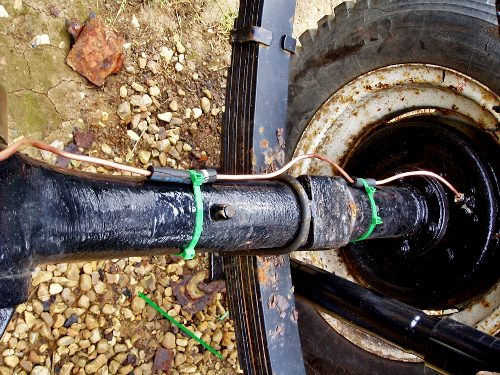
Here's a free lesson that'll save you some time (and possibly losing
your no-claims bonus):
Never buy aftermarket (pattern) brake parts. We've had
horrendous troubles with the braking systems while using non-genuine
parts, by which I mean "having no brakes when they're most desperately
needed". Given how many times we have replaced said aftermarket parts,
we'd have saved money and spared ourselves a few frightening
experiences by going for the slightly more expensive genuine components
right from the start, which work flawlessly. We learned this lesson
the hard way so you don't have to!
These are two of the creature comforts:
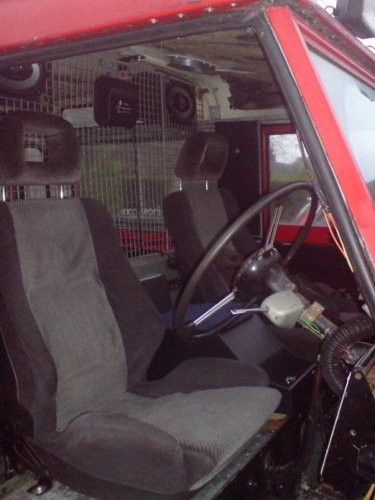
That is to say, actual seats with seatbelts. The seats were from
a Mark III Vauxhall Cavalier and the seat belts were from a Land Rover
Series III. It required considerable strengthening and modification of
the standard Land Rover seat box, of course, but it was definitely worth
it: they're fantastically comfortable! (I modified two nearly-identical
Astra seats for use as desk chairs, where they also serve very well.)
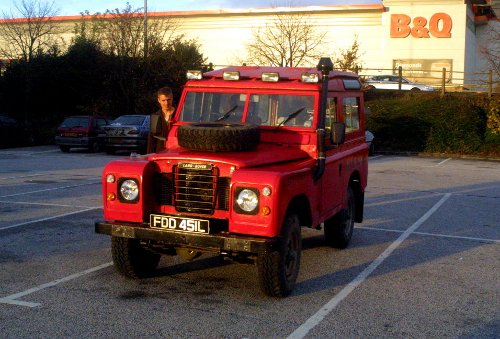
The Red Shed a few minutes after its first MOT in November 2008.
All in, to get it in a fit state for its first MOT in the Rusty Rhinos'
possession (and a fit state for taking a pounding in the Sahara) took us
eleven months. Eleven months is a lot of time; we had plenty of moments
in which it felt like it would never be finished, and maybe one or two
"let's weigh it in" moments too.
Did I mention that we were rebuilding a second beast from
Solihull
all the while?
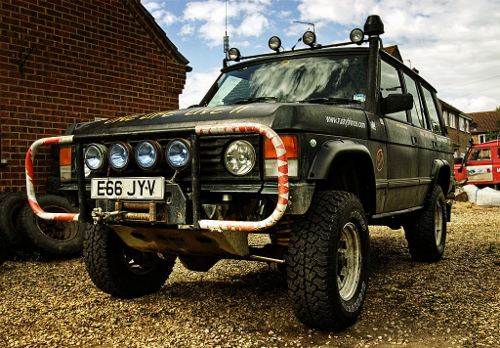
Two trips to the Sahara, in addition to one shortly to come, took
a heavy toll on the old Land Rover. The second one literally
split it in half (and was hastily patched up in a garage in
Morocco), and it has had its share of other less-drastic incidents
since.

Of course, Red is an ongoing project; among many other things,
it has had a rebuilt gearbox, electronic ignition, and new shocks
since the last trip. We fully intend to keep it loved and running
through its half-century birthday and long past that.

Long live the Red Shed!
-- Lewis Collard
Rusty Rhinos Ground Crew
